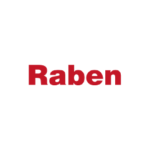The Kaizen philosophy focuses on continuous process improvement in the organisation. It means a long-term improvement, step by step, every day, by EVERY employee, from the executives and to regular employees. It would seem that the application of the KAIZEN principle only requires the inclusion of a thought process at every stage of production, but this is only a theory. And how does it look in practice?
How much time do managers, foremen and team leaders who are closest to the production process devote to improve processes in the organisation or even to analyse them, and how much time does their administrative work take? I admit that I have never met with research results in this area. However, I have often heard similar answers: we spend too much time on administration; our staff does not have time to fully use their competences, etc. In practice, it seems that people in managerial positions often handle things which they should not and which take a lot of time. This includes:
- designing a production schedule, to ensure what, where and in what order will be done;
- planning the working time of employees, to ensure who and when should come to work;
- mediation in communication between employees and the HR department in the organisation, i.e. informally speaking, to be the “secretaries of employees”.
Production scheduling, work time planning or administration and HR are very much needed, which is beyond doubt. However, they do not have to take so much time. Using appropriate automation of selected processes, we can improve their quality while significantly reducing the time needed for their implementation.
Production scheduling
Operational planning of production tasks by foremen or managers is a common practice. In this situation, the planning department verifies only the overall balance of production capacity, and detailed planning is performed at the grassroots. Why is it like that? One of the reasons may be the shortage of standardised technological data, parameters of the manufacturing process and the shortage of reliable data on the current use of machinery and tools. This approach makes whole scheduling extremely subjective. We do not focus on the overall synchronisation of the production planning process, but only on its individual microareas. It is extremely important to change the way of thinking and look at production as a whole: a complicated and demanding process that requires commitment and work in the very beginning, when modifying business processes and changing the organisation’s approach to these activities. Do not be afraid of this: there is a lot of work but the effects are worth it.
So where then should you start to change? First of all, it is essential to determine how the production control process works: who, with whom and when communicates. Secondly, it is necessary to standardise technological data and process parameters. We must ensure that our data are reliable. What I mean are all the areas that influence the production process, supply, maintenance, sales, etc. When we carry out these basic activities, we should focus on the business goals that the company wants to achieve, e.g. reduction of changeover times, minimisation of the level of production in progress and so on. Only in the next step can we focus on the automation of processes. The APS system, for example ASPROVA, will reduce the entire scheduling process, with all process limitations defined, including optimisation criteria (business goals), for us to a few minutes only. And actually, not for us but for the Production Planning Department. People who have dealt with this so far, foremen or managers, should get a ready schedule. Instead of designing it from the beginning, we can focus on its implementation and spend the time thus saved on process analysis, verification of deviations from the plan or finding errors, for instance.
Work time planning
Another task that foremen or managers are often charged with is planning the working time of their employees. How do they do it? On paper, sometimes in spreadsheets by selecting X on a given day for a specific employee. It may work “somehow”, but is such a plan precise and how long does it take to prepare it? It depends on how many elements we have to include in it, holiday leave, sick leave, joint commuting of employees to work and adequate competencies, the requirements of the Labour Code, etc. This is a standard, and what if the company has an equivalent working time with a settling period of several months? This is how work time planning takes a lot of valuable time and it can be burdensome. Fortunately, there is a solution for this. There are systems that allow us to draw up a work schedule tailored to our needs with one click. XPRIMER.TPL offers such possibilities as it covers the following data:
- employee competences, e.g. those which the production plan includes;
- provisions of the Labour Code;
- company’s internal regulations;
- employee preferences;
- principles of the internal staff planning strategy, for example if we want to plan the work of full-time employees in the first place, plan work evenly on Saturdays, etc.
XPRIMER.TPL with one click can include all this data and plan the work in our organisation. On what to spend the time saved? I’ll go back to the beginning again: to analyse and further improve the production process.
Communication with the administration and HR
In one of the companies where each foreman has about 50 people, I heard the sentence: we don’t want our foremen to be secretaries of employees! Each employee’s question about available holiday leave, any holiday request, an income or employment certificate request is a waste of time for the immediate superior. Automation of these processes using an HRM system, e.g. XPRIMER.HRM, allows faster, easier administration, additionally expanded by what is known as employee self-service. Therefore, it is not only the manager who benefits, but also the employee who, through the info-kiosk, can check all information regarding their position, e.g. the number of remaining holiday leave days or the current work schedule. In addition, employees can on their own enter a holiday leave request, an income or employment certificate request or verify their payslips without having to contact their supervisor or visit the HR department.
This approach allows us not only to gain time but, above all, to provide better work comfort for both sides, the manager and the employee. It also means savings and greater control of regulations. The role of foremen and managers is limited only to accepting or rejecting requests received without having to deal with unnecessary paperwork. Eliminating them from many of these processes allows you to save time without having to forward paper documents.
All the examples of manual production scheduling, inefficient planning of working time or excessive involvement in administrative activities cited above made me think of something. In companies, we can meet people with vast knowledge and experience, who could not only participate in but even become the driving force of continuous improvement if only they had time. Instead of using their competences, giving them a chance for development, we involve them in a huge number of tasks, often purely administrative. Tasks that can be quite easily automated. Is it logical?
Michał Żelichowski
board member eq system



































